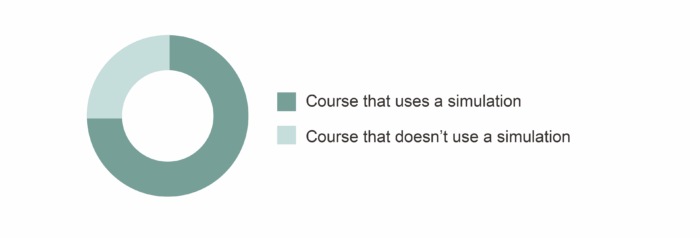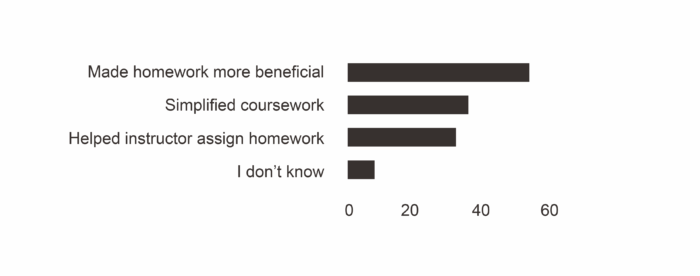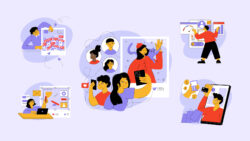Each year, millions of students begin their higher education journey with one goal in mind: to prepare for a successful career. But today’s learners expect more than lectures and textbooks. They want relevance, engagement, and hands-on experiences that mirror the real world.
To better understand the impact of simulations on student learning, Stukent® surveyed more than 4,000 college students and graduates. Their responses reveal that simulations can increase confidence, improve academic performance, and prepare students for real-world success.
Here’s what students told us, and what it could mean for your course.
1. Students Prefer Courses That Include Simulations
74% of students who hadn’t used a simulation said they’d choose a course that included one.

Simulations turn learners into decision-makers. When students take on roles such as brand managers or SEO specialists, they begin connecting classroom concepts with real-world applications. The result is deeper learning through action.
Stukent Simternships® provide role-specific experiences in a digital, career-based environment. They transform students from passive listeners to active learners.
This kind of hands-on experience leads to higher engagement and long-term retention. According to Bret Skousen, a marketing professor at Utah Valley University, the real growth happens not just when students succeed in the simulation, but when they reflect on their results and make adjustments.
“They hate it in the beginning, but by the end, they realize that’s where they learned the most,” he said. (Note: This quote was not pulled from the survey)
2. Simulations Prepare Students for Real-World Careers
Over 64% of survey respondents who used simulations indicated that they agreed or strongly agreed with the statement: “Simulations were effective in preparing you for opportunities outside of the classroom.”

Simulations offer realistic tasks such as:
- Running ad and SEO campaigns
- Conducting A/B tests
- Managing client communication
- Adjusting a marketing mix
These activities build transferable skills. For example, Texas State University student Isabel Duntly said her Simternship helped her think through professional decisions she hadn’t encountered before.
3. Simulations Build Knowledge and Confidence

Nearly 90% of respondents who used simulations marked “yes” when asked if simulations improved their confidence level and knowledge of the subject.
Many professors align simulation activities with weekly lessons. For example, during a pricing unit, students complete the pricing round in the simulation. This integration helps solidify key concepts through application.
“I’ve had several students who are quite shy or lack confidence who really embrace the simulation’s experience, and they just shine through it,” said Rebecca Cooney, an instructor at Washington State University. “Several of them have ended up becoming peer-mentors during live walk-throughs as well as online and in my discussion forums.” (Note: This quote was not pulled from the survey)
4. Students Earn High Grades in Simulation-Based Courses
About 90% of survey respondents who had used simulations reported scoring A’s and B’s in courses that used simulations.

When students are more engaged, they tend to perform better. Simulation-based learning encourages active participation, which often leads to improved academic outcomes. Instructors report that students who use simulations are more motivated to complete assignments, ask questions, and participate in class discussions.
Some professors use simulations throughout the semester as formative learning tools, while others implement them as a capstone or final project. This flexibility allows instructors to design experiences that reinforce learning while helping students connect the dots between theory and practice.
5. Simulations Make Homework More Valuable
More than 50% of students said simulations made their homework more beneficial.

Simulations provide context that makes other assignments more meaningful. After working through simulation rounds, students can better understand why they’re being asked to complete additional assignments and how those tasks connect to real-world scenarios. For instructors, this means homework can become more reflective, discussion-based, or project-driven rather than purely repetitive.
Simternships also include clearly defined learning objectives and built-in assessments, which allow instructors to track progress and tailor support. With each new round, students build on the knowledge and skills they’ve developed, making it easier to apply classroom learning to other course elements.
6. Classes That Use Simulations Are More Enjoyable
Over 70% of students said simulations agreed or strongly agreed that classes with simulations are more fun than classes that don’t.

Students consistently report that courses with simulations feel more engaging and less monotonous. Simulations introduce variety, urgency, and relevance into the learning process. Rather than simply studying abstract principles, students are tasked with making decisions, analyzing outcomes, and adapting strategies. This interactive environment gives students a sense of autonomy and responsibility.
Some educators even build in gamified elements to increase motivation. For example, Traci Bitler of Rhodes State College awards bonus points to top performers, fostering healthy competition and a sense of fun. Meanwhile, marketing student Jaala James said that Simternships helped her reconnect with school by making her classes feel more directly tied to her future goals.
7. Simulations Encourage Instructor Involvement
More than 50% of students said their instructors were actively involved in the simulation process.
Simulations open up more opportunities for instructors to mentor and support students. Educators like Rebecca Cooney of Washington State University use discussion forums to let students ask questions and collaborate on strategy. Others, like Ryan Russell of the University of Tennessee at Chattanooga, dedicate class time to “Sim Days,” where students complete rounds together with instructor guidance.
Auto-grading features and LMS integration also reduce administrative burden. With less time spent scoring assignments manually, instructors can focus more on individual student progress and offer targeted feedback — leading to stronger connections and improved learning outcomes.
Find a Simternship for Your Course
Simternships give students a structured, meaningful way to develop career skills while still in school. Each simulation is carefully designed to mimic the responsibilities of specific job roles, from marketing coordinator to financial analyst to public relations manager. These experiences help students gain confidence in their abilities, explore career options, and build resumes that stand out.
For instructors, Simternships offer a flexible, high-impact tool that integrates seamlessly into any course format. With automatic grading, data-rich dashboards, and LMS compatibility, they simplify course prep and increase instructional impact.
Stukent offers Simternships for accounting, business, marketing, and communication courses. Try one out today with free instructor access!






